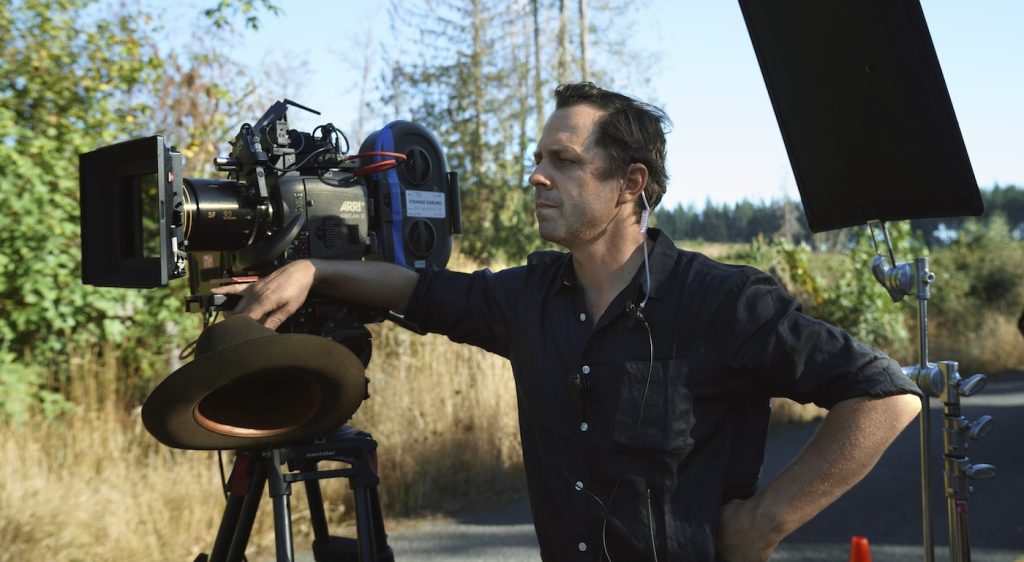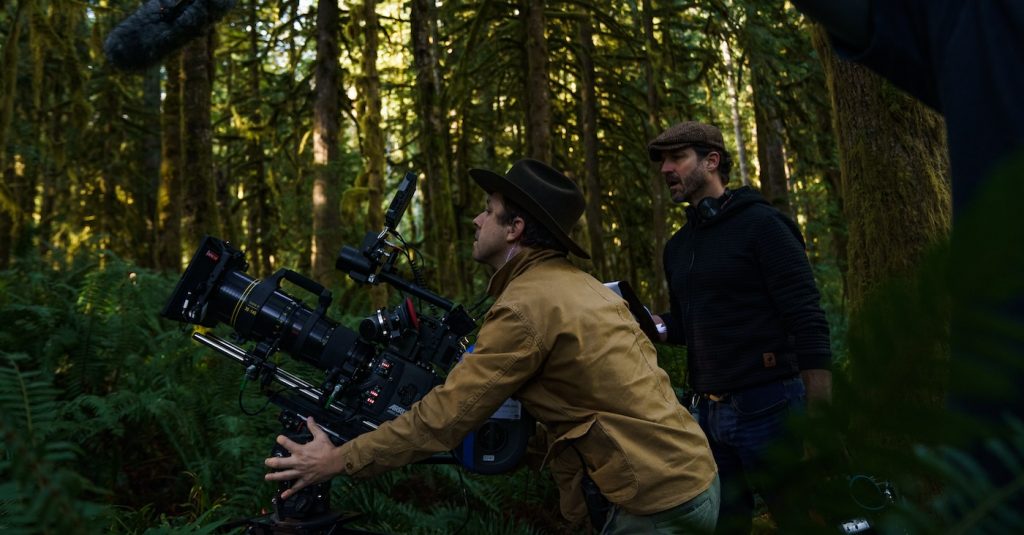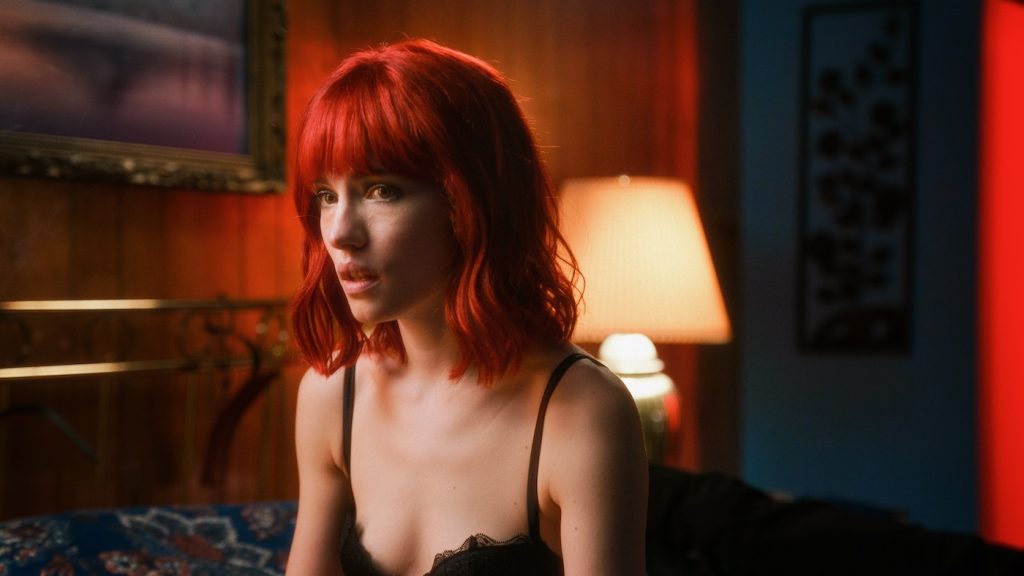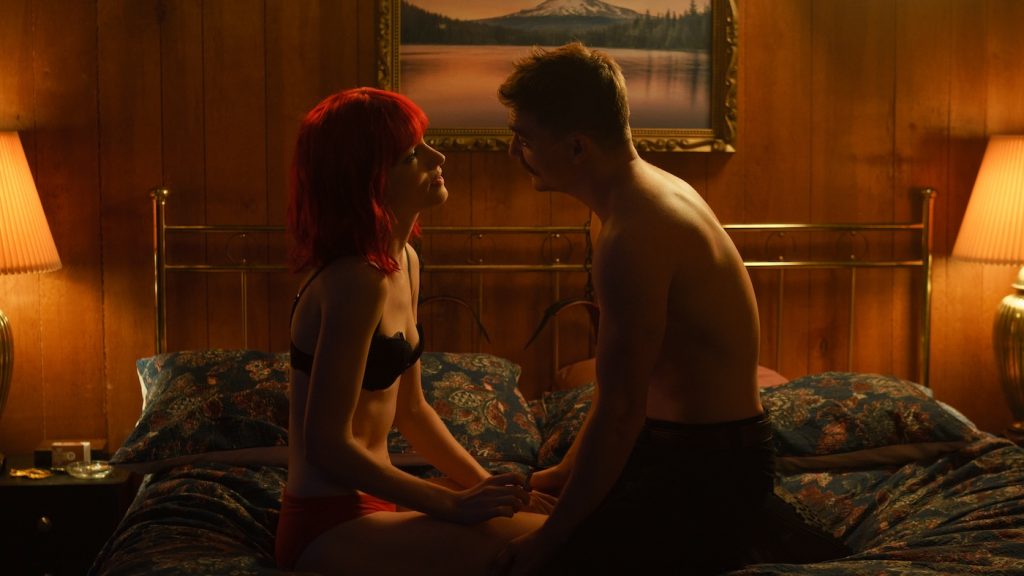Giovanni Ribisi on Shooting JT Mollner’s Must-See Horror “Strange Darling”
About 15 years ago, I was editing a magazine out of this small audio shop off Cahuenga Blvd. in Los Angeles, and in walked Giovanni Ribisi. At the time, the actor was already ten years removed from one of movie history’s most harrowing death scenes in Saving Private Ryan and was coming off the recent billion-dollar success of Avatar. But Ribisi wasn’t there for anything acting-related. He was looking for an audio cable for a recent camera purchase. The drop-in turned out to be just one piece in a decade and a half-long attraction he had to work behind the camera. Ribisi would go on to shoot short films and music videos but wouldn’t step into his first feature film cinematographer role until writer-director JT Mollner’s must-see horror thriller Strange Darling.

The two met through a mutual friend, and after sharing a love for celluloid, Mollner would casually send Ribisi scripts. Strange Darling (which had a different title at the time) caught his attention. I asked Ribisi if an emotional connection to the characters made him react the way he did. “For me, it was not necessarily as much of an emotional connection to the characters as much as it was to the overall form and writing that jumped off the page to me. I think I’ve said this before, but within 15 minutes, I was calling him and begging him to be involved in the project.”
After watching Strange Darling you’ll understand why Ribisi wanted to be part of the film. Mollner’s story takes place over six chapters and follows two characters – The Lady (Willa Fitzgerald) and The Demon (Kyle Gallner) – on a bloody path of lust (and possibly love) but through an unconventional lens that exploits horror tropes while pulling the rug out from underneath you several times. But the plot twists are not gimmicky. There’s an undeniable weight to them that deepens the story. And making it all work is how the narrative unfolds in a nonlinear timeline. Ribisi agrees.
“Many people will discount a nonlinear plot structure because it’s been done before, and it’s very, quote-unquote, Tarantino-esque. But this [script] set itself apart from that. This was a version of deconstructing a timeline without emulation of other movies. And I think going back to character, the structure and the sequence of Strange Darling, as it was written, really spoke to the impetus or a certain deep character DNA that, for me, it was just undeniable.”

Also undeniable is the rich imagery, and the movie makes a point to tell the audience why it is with an opening title card that says Strange Darling was shot on 35mm film. The choice of celluloid adds to the darkness bubbling up throughout the entire movie. Vivid primary colors connect a certain veracity to the characters. Red plays to the chaos and uncertainty, while blue fuels the intimacy between them. The former can be found in almost every scene, from the costumes and wigs to the color of a car or the walls of a room – all simmering a visual fire.

“With red, there’s a lot of symbolism. Vittorio Storaro [Italian cinematographer] gets really deep into color and symbology, which some people discount, but I think it’s incredible. We just wanted to have something very striking, and also, it was just purely a reactionary decision in the sense that we want to do what everybody else is not doing.” Red illuminates a sense of strength to The Lady character as well. “She’s a very powerful woman,” says Ribisi. “She doesn’t do things in a mild way. Not to say that she’s not nuanced, but when she goes, she goes.”

In a scene where the two characters first meet, they have a deep conversation while sitting in a truck under thick blue lighting. “For me, it’s one of my favorite scenes, not for the photography but because of the actors. It’s an eight-and-a-half page scene, and after all that unrest in the beginning, I fall in love with them. I get seduced especially by her, and I’m rooting for them,” he says. “We took about two days to shoot that on a soundstage, and I wanted to shoot it so I could get a thousand-foot mag right up to her face and his face, but we couldn’t get approved removing the front engine compartment and windshield off. We were going to put them in these black holes and surround them with blue light. But at the end of the day, I’m glad that it worked out like where we ultimately decided to shoot French overs.”
When asked if he has an actor’s intuition when it comes to cinematography, Ribisi shares that he “approaches photography from an intuitive character perspective.” “It’s purely the thing that fascinates me. You look at Harris Savides, and according to the legend, he used to say, ‘I don’t like actors, I like environments.’ And then you have other people who are really focused on faces. I remember working with Janusz Kaminski [Saving Private Ryan] before we went off to the bootcamp, and Janusz, who I didn’t know at the time, came in and was sitting down and I was like, ‘Oh, who are you? And he said, ‘I’m the cinematographer.’ And he was just hanging out, looking at our faces just sort of studying. And it was just wonderful. I’ll never forget that. So, from a cinematographer’s perspective, I want to understand what the character is experiencing. And I either want to get out of the way of what the actor is doing and simply let the actor do it or if there’s something that we can contribute to do that. It becomes an intuitive thing so I can’t help but look at it through the proverbial and literal lens like that.”
Strange Darling is in theaters now.
Featured image: Willa Fitzgerald in “Strange Darling.” Courtesy Magenta Light Studios.



